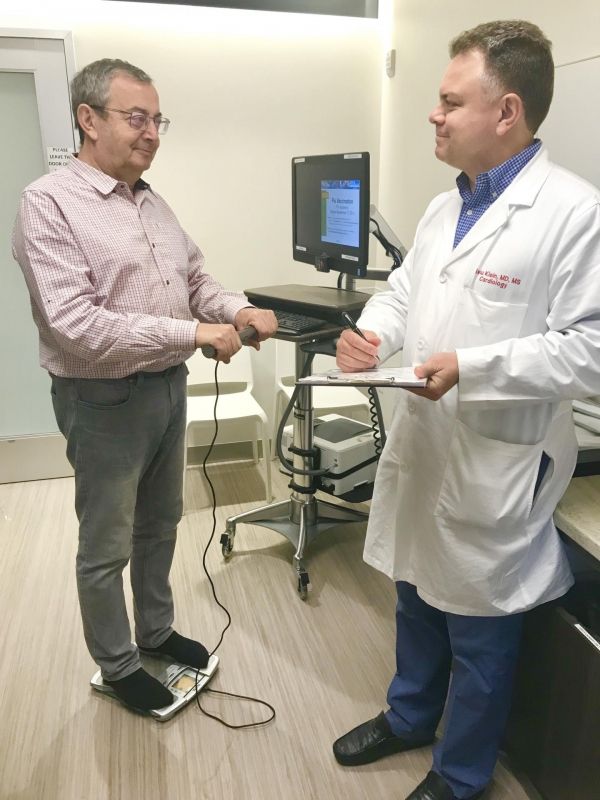“Good morning. Bill. Please. Step onto the scale. Touch the metal pads.” The device records an electrocardiogram from Bill’s fingers and - more importantly – circulation pulsing that makes his body subtly bob up and down. Machine learning tools compute that Bill’s heart failure symptoms have worsened.
This is how researchers at the Georgia Institute of Technology envision their experimental device reaching patients someday, and in a new study, they reported proof-of-concept success in recording and processing data from 43 patients with heart failure. A future marketable version of the medical monitoring scale would ideally notify a doctor, who would call Bill to adjust his medication at home, hopefully sparing him a long hospital stay and needless suffering.
The pulsing and bobbing signal is called a ballistocardiogram (BCG), a measurement researchers took more commonly about 100 years ago but gave up on as imaging technology far surpassed it. The researchers are making it useful again with modern computation.
“Our work is the first time that BCGs have been used to classify the status of heart failure patients,” said Omer Inan, the study’s principal investigator and an associate professor in Georgia Tech’s School of Electrical and Computer Engineering.
Read more at Georgia Institute of Technology
Image: An experimental scale that monitors heart failure has successfully gone through proof-of-concept testing. (Credit: University of California, San Francisco)


